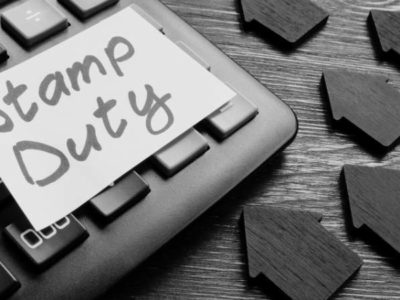Bridging loans are not widely understood, despite being more accessible than ever before. Although they can often be an expensive way to borrow, this type of loan offers a fast cash option for property investors in tight spots. With some careful research and negotiation, there are great deals to be done.
What is a bridging loan?
A bridging loan is a short-term loan taken out to cover the interval between two transactions, typically the purchase of one property and the sale of another, or the purchase, renovation and resale of a property, for a higher amount.
Bridging loans have some similarities to mortgages, albeit short-term ones. Like mortgages, the amount you’re allowed to borrow is usually dependent on the value of the property you’re borrowing against. The property is also used as security for the loan, so if you fail to meet repayments, the lender may repossess and sell it to cover the debt.
Bridging loans are also like buy-to-let mortgages in that interest is paid over the loan term, with the capital payable in a lump sum as the term comes to an end.
There are also some fundamental differences. The most obvious of these is the term – a mortgage usually spans 25 years, or longer, while the average bridging loan duration is 12 months.
Another major difference is the cost of borrowing. Currently, most mortgage rates come in under 5 per cent of the total amount borrowed. Bridging loan interest rates, however, start at around 8 per cent and can be as high as 15 per cent or even more.
Finally, bridging loans are extremely quick to arrange in comparison to mortgages – often being put together in days or weeks, rather than months.
Should I take out a bridging loan?
As bridging loans can be an expensive way to borrow, it makes sense to think carefully before you choose this type of finance. While they might be absolutely necessary for your specific situation or investment strategy, it is wise to understand their unique characteristics first if you are new to bridging loans.
If you wish to buy a property, but don’t intend to keep hold of it for very long, a bridging loan can be a sensible option, allowing you to fund the purchase until you ‘flip’ the property on, hopefully for a reasonable profit.
If you’re thinking of renovating a house, in order to increase its value, before borrowing against this higher value, a bridging loan could also be a good option.
Also, if you want to purchase a property to renovate that’s being sold in a very poor condition, a bridging loan may be your only option, as most mortgage lenders will only allow borrowing against a property that’s in a habitable, and therefore rentable state.
In any situation where speed is of the essence, a bridging loan can be a good solution. Bridging loans are particularly useful if you’re a property developer, as they allow you to move quickly and compete with cash buyers who have instant purchase power.
How much can I borrow with a bridging loan?
The amount you can borrow with a bridging loan is entirely dependent on the value of the property that you are borrowing against. Most lenders will calculate a loan to value rate based on the purchase price of the property, as is the case with mortgage borrowing. Some, however, will consider lending based on the current market value of the property, even if you paid less than this for it.
Some lenders may also allow you to borrow based on the expected value of the property, once you have completed any work you intend to carry out (this is the Gross Development Value, or GDV.)
Stretching your borrowing as far as possible is an appealing prospect, but keep in mind that the more that you borrow, the higher your interest rates and monthly repayments will be.
Will I qualify for a bridging loan?
The main factor in determining whether you qualify for a bridging loan, and how much you can borrow, is the value of the property you intend to purchase. Unlike with a mortgage, the lender will be fairly uninterested in your current financial situation and income, or the rental potential of the property. It’s this simplicity and flexibility that give bridging loans their power and value.
Lenders are more likely to be interested in how much experience you have with property development, how you plan to pay the loan back and whether the property will be marketable if you plan to sell, or they need to repossess it, in order to cover the debt. They will also take a look at other assets you might have, as they would go after these should you default on the bridging loan.
Ultimately, lenders will be less concerned with this type of borrowing. If you default on the loan; they can simply repossess and sell your property to recover their debt. They may also be able to charge large penalty fees if this happens, meaning that they will end up making more money than if you’d paid the loan back in instalments.
Will I have to pay any fees?
Yes. Fees are typically payable on top of the interest charged and are often what makes this type of borrowing an expensive option.
Fees vary from lender to lender, but you may need to pay for a property valuation, an arrangement fee, the lenders legal fees, your own legal fees, an exit fee (usually around 1 per cent of the loan’s total value) and a broker fee, if you used one.
Usually, the more experienced you are as a property developer, the less you’re likely to pay in fees on a bridging loan. If it’s your first application, you can expect to pay up to 3 per cent, plus two sets of legal fees. This is why it’s important to weight up the costs of a bridging loan with the potential benefits.
If borrowing on a short-term basis allows you to fund a highly profitable project in a sound location, with a great ROI, then the high interest rates and fees are worth paying. If you’re unsure, a qualified financial advisor can help you decide.
How do I apply for a bridging loan?
Applying for a bridging loan should be a fairly quick process, however it does involve the assistance of a solicitor (and you’ll need to pay for the lender’s solicitor to complete the transaction too.)
The lender will need your solicitor to send over all the usual information required in a property purchase, such as searches, insurance and checks of the Land Registry. Once this has been checked and approved, the loan can be released, and the purchase can exchange and complete.
Is a bridging loan the best borrowing option for me?
A bridging loan can be a great option for property investors that need fast cash to furnish a great deal. If you’re not sure whether it’s the right type of borrowing for your current situation, ask yourself if the ROI justifies the high cost of borrowing.
You also need an effective exit strategy that will allow you to pay off your bridging loan in full, at the end of the term. Finally, ask yourself how quickly you really need the cash. If you can allow for more time in organising the loan, you are likely to receive more favourable interest rates and fees.

























Comments